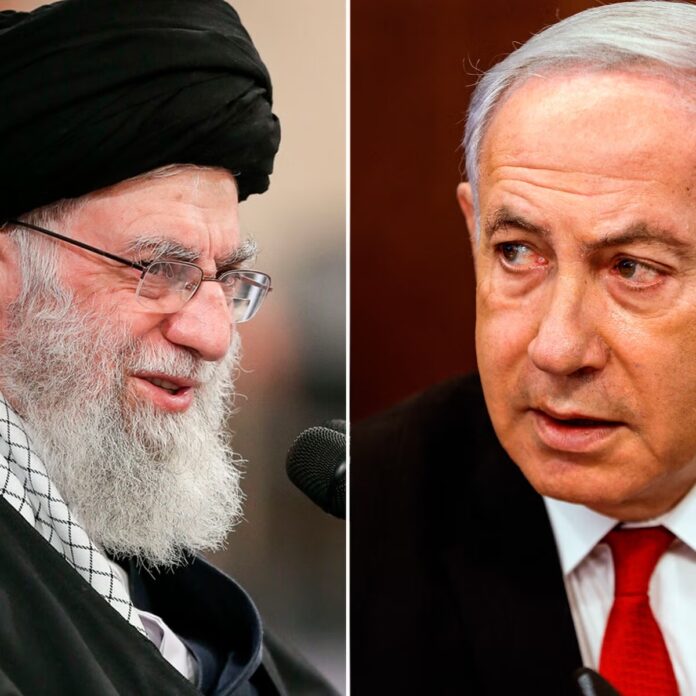
On October 19, Israeli Prime Minister Benjamin Netanyahu’s office confirmed that a drone was launched toward his residence in Caesarea. The Prime Minister and his wife were not at the location at the time, and no injuries were reported. This came shortly after the Israeli military reported that a drone from Lebanon had hit a structure in central Israel, though it was unclear if this was Netanyahu’s private residence. According to the military, three drones had been launched from Lebanon on the same day, with two successfully intercepted.
“A UAV (unmanned aerial vehicle) was launched towards the Prime Minister’s residence in Caesarea. The Prime Minister and his wife were not at the location, and there were no injuries in the incident,” Mr Netanyahu’s office said.
In addition to the drone activity, a barrage of projectiles was fired from Lebanon into northern Israel, triggering air raid sirens across the region. On October 19, Lebanese authorities reported that an Israeli air strike killed two people in Jounieh, a town north of Beirut. This was the first strike on the area since the conflict between Israel and Hezbollah intensified. The attack targeted a vehicle on a key highway, as confirmed by Lebanese state media.
The previous day, on October 18, the Israeli military announced the destruction of Hezbollah’s regional command centre through an airstrike. Hezbollah responded by launching rockets at the Israeli city of Haifa and areas to its north and later claimed responsibility for sending explosive-laden drones toward an Israeli missile defence base near Hadera. Israel has also deployed ground troops to the Lebanese border as part of its ongoing operations.
The escalating tensions come amid a broader conflict between Israel and Hamas ally Hezbollah, the Iranian-backed militant group in Lebanon. Israeli forces have been engaging Hezbollah since 2023, with both sides trading fire regularly.
Hezbollah’s direct attack on Prime Minister Benjamin Netanyahu’s residence raises questions about Iran’s involvement. Israel’s media assert that this was an assassination attempt planned by Iran. Since Hezbollah and Hamas have been backed by Iran, therefore it is impossible to refute the allegations. But the more pressing concern is what kind of retribution Israel will take.
Iran Continues To Add Fuel As Israel, Hamas, And Hezbollah Shatter Hopes Of Averting War
On Friday, pledges by Israel, Hamas, and Hezbollah to continue fighting in Gaza and Lebanon dashed hopes that the death of Yahya Sinwar, the Hamas militant leader, might accelerate an end to over a year of escalating conflict in the Middle East. Iran, the key supporter of these militant groups, claimed that Sinwar’s death would only “fuel the spirit of resistance.”
Sinwar, who masterminded the October 7, 2023, attack that triggered the Gaza war, was killed by Israeli forces on Wednesday. Israeli Prime Minister Benjamin Netanyahu called it a significant milestone but emphasised that the war was far from over, with a continued focus on securing the release of hostages held by Hamas. Netanyahu also saw an opportunity to confront the “axis of evil,” referring to Iran and its allies in the region.
Hamas, in response, stated that Sinwar’s death would strengthen their resolve, and they insisted that hostages would only be released if Israel halted its operations in Gaza, withdrew its forces, and released Palestinian prisoners.
Western leaders, including U.S. President Joe Biden, expressed hope that Sinwar’s death could provide an opening for negotiations, a sentiment that Israel has so far rejected. Egyptian Foreign Minister Badr Abdelatty warned that the region might be on the brink of a wider war.
The conflict has also seen direct confrontations between Iran and Israel, including missile attacks in April and early October. While Biden mentioned the possibility of a ceasefire in Lebanon, he acknowledged that it would be more challenging in Gaza.
Israeli forces killed Sinwar during a gun battle while he was reportedly hiding in Hamas’ tunnel network in Gaza. Drone footage released by the military showed Sinwar in a damaged building, seemingly unaware of the drone tracking him. Sinwar had led Hamas since the assassination of political chief Ismail Haniyeh in Tehran in July.
The October 7 attacks in Israel that Sinwar orchestrated resulted in around 1,200 deaths. In retaliation, Israel’s subsequent operations have killed over 42,000 people, displaced millions, and caused extensive damage in Gaza. Hezbollah, which joined the conflict in support of Hamas, has also faced intense Israeli airstrikes in Lebanon.
Israel’s operations have decapitated much of the leadership of Hamas and Hezbollah, significantly impacting the “Axis of Resistance,” a coalition of Iranian-backed militant groups. While experts anticipate that Hamas will soon appoint a new political leader from outside Gaza, Mohammad Sinwar, Yahya’s brother, is expected to take a more prominent role in directing operations in Gaza.
Iran reiterated its commitment to the “spirit of resistance,” while Hezbollah announced an escalation in its confrontation with Israel. The Israeli military, on Friday, confirmed the killing of Muhammad Hassin Ramal, Hezbollah’s commander in southern Lebanon.
During a visit to Beirut, Italian Prime Minister Giorgia Meloni called for strengthening the U.N. peacekeeping mission in Lebanon, known as UNIFIL, and condemned recent attacks on its personnel. She also planned to meet Netanyahu following her visits to Lebanon and Jordan.
“I repeat that I consider targeting UNIFIL is unacceptable,” Meloni said in a joint news conference with Lebanese Prime Minister Najib Mikati.
